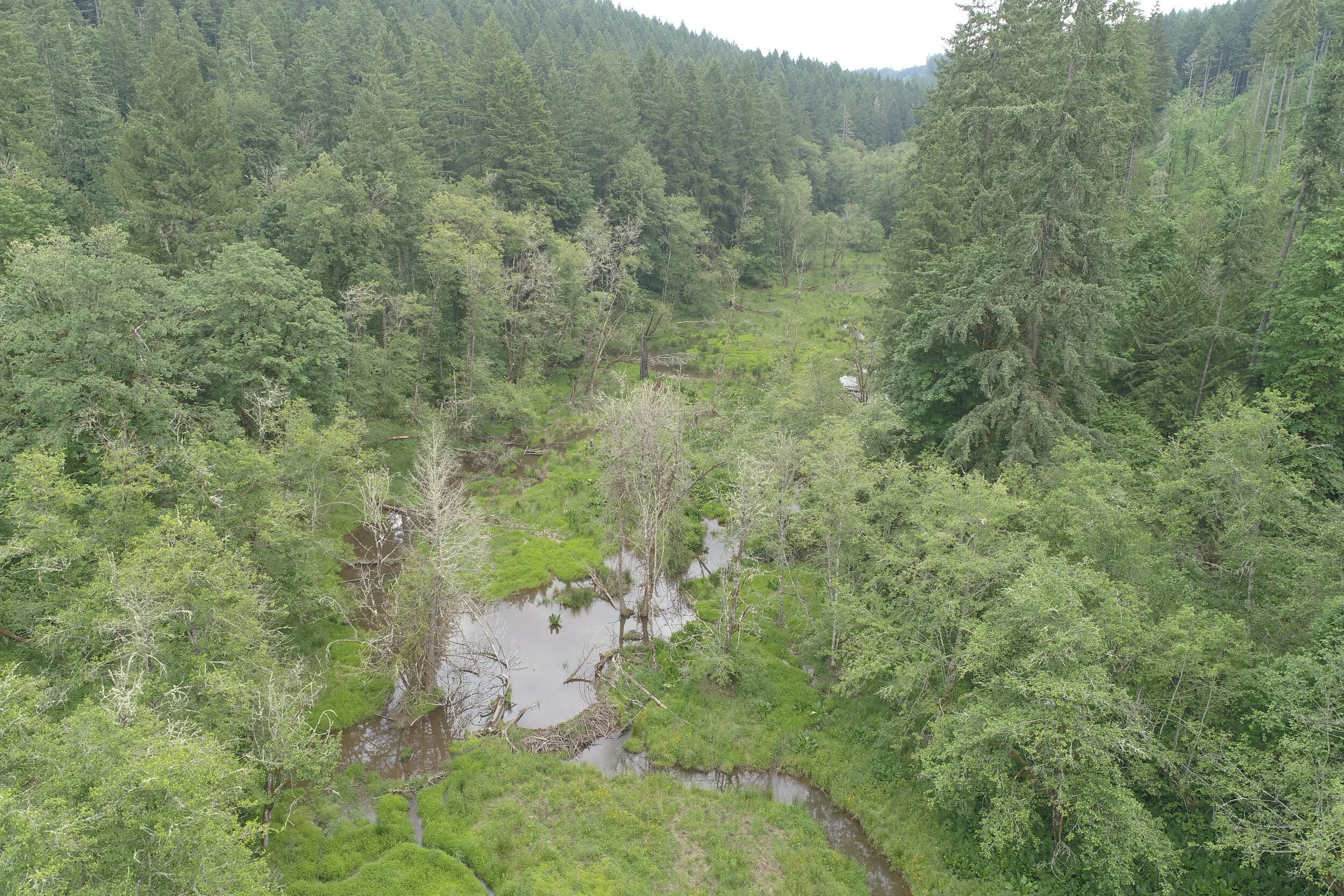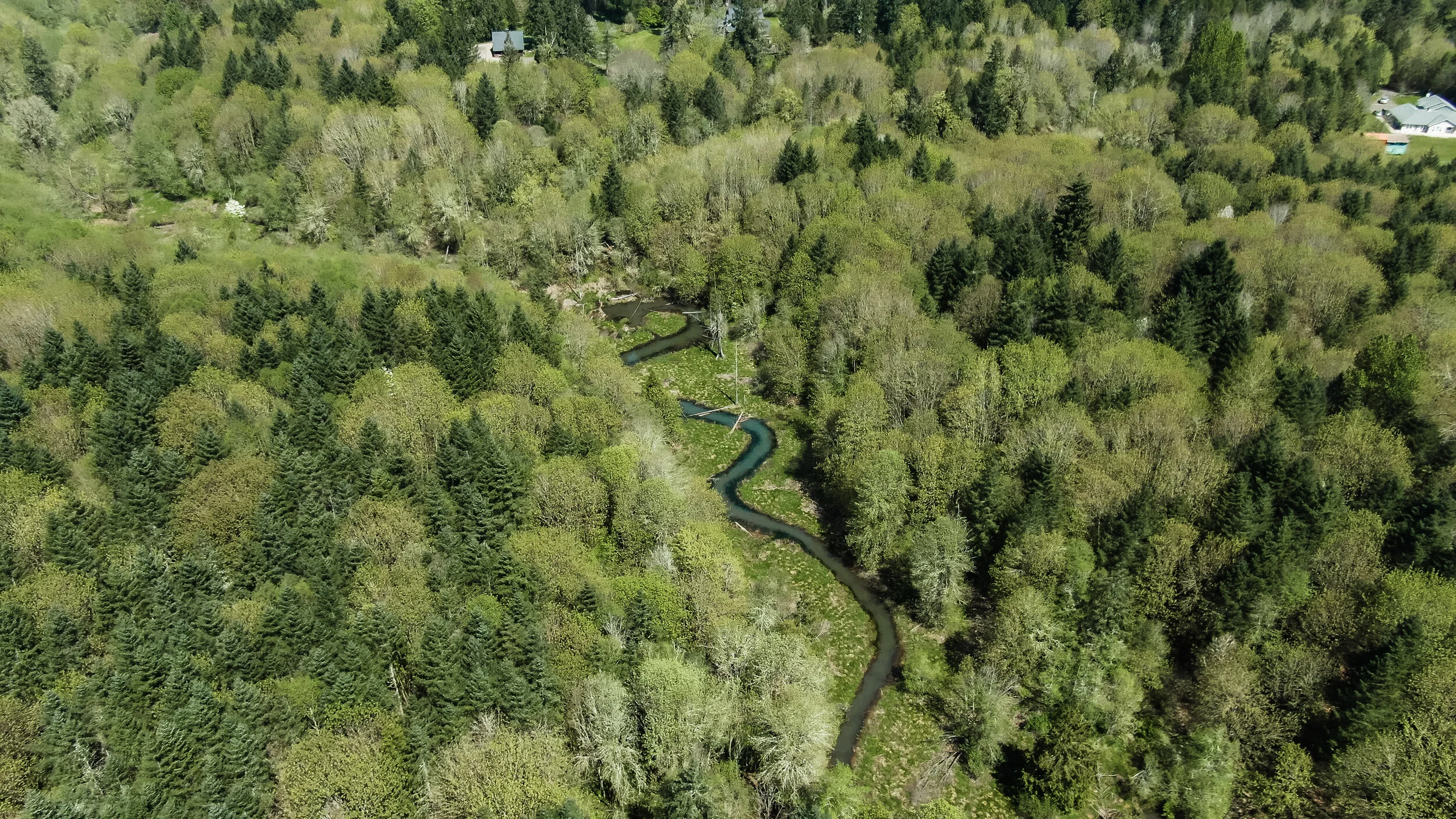A Long, Healthy Stretch of Creek Provides Unique Opportunities
The Baker Creek Complex spans nine distinct parcels under private and public ownership, including many areas with a history of logging and farming. Bordered to the west and south by Chehalem Ridge, it includes a mix of rural residential, ranch land, agriculture, and natural areas. The overall size of the site provides unique opportunities for partners to plan and work at a sub-basin scale. The area is also part of the headwaters of the Tualatin River, which provides drinking water to more than 365,000 homes and businesses in Washington County.
Within this corridor, many portions of Baker Creek are in excellent condition. For example, stable banks line the canyon reach, which features diverse in-stream habitat, shade, natural large wood, and minimal human conflict. This area provides prime habitat for beavers. Baker Creek is also home to a wealth of native plants, including some remnant native trees like Pacific yews and an upland understory that is rare among Tree for All projects.
The Site
Size: 260 acres
First planting: 2018-19
Stream length: 2.54 miles
Plant communities: Mixed Foothills Riparian Forest, Shrub Wetland
The Challenge
In some locations along Baker Creek, non-native and invasive plants are crowding out native plants and degrading habitat for wildlife. For example, portions of the creek, including the lowland reach near the confluence with Heaton Creek, were deeply eroded, overrun by reed canary grass, and lacked geomorphic complexity.
Other challenges include a major road crossing and agricultural runoff in the upper reach, which contributes to erosion and sediment problems downstream, and a culvert at Mountain Creek Road that presents an obstacle for juvenile fish.
The Transformation
The Baker Creek Complex’s size creates opportunities to achieve more significant and sustainable positive impacts on aquatic habitat, floodplain connectivity, channel complexity and riparian restoration by planning at the sub-basin scale. Additional land acquisitions or conservation agreements with private landowners are possible to link the creek from the headwaters to the confluence with the Tualatin River.
Meanwhile, work is underway in portions of the site to remove nonnative and invasive plants and replant native trees, shrubs and grasses. In time, a riparian forest will fill in, providing shade and natural filtration to the creek, and habitat for wildlife. Beaver activity, already significant, will increase further, which will promote floodplain reconnection.
Learn More
Read about the return of Coho salmon to Baker Creek on Metro News.





































